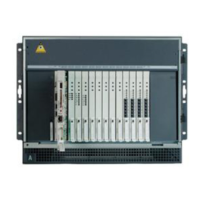Issue 4.1 June 2005 95
Appendix A: Accessing the media server
To administer the media server, you must be able to access it. Personal computers and services
laptop computers equipped with a network interface card (NIC), a terminal emulation program,
and a Web browser are the supported access points for accessing the media server for initial
configuration, aftermarket additions, and continuing maintenance.
You can access the media server either directly or remotely over the customer’s network or over
a modem. Connecting directly and remotely over the customer’s network are the preferred
methods. Remote access over a modem is for Avaya maintenance access only.
This section covers the following sections:
● Connecting to the media server directly on page 95
● Connecting to the media server remotely over the network on page 98
● Connecting to the media server remotely over a modem on page 98
● Logins on page 101
● Network configuration on page 102
Connecting to the media server directly
You access the media server directly by plugging a laptop computer into the services port (port
2 [Eth1]) on the media server. See Figure 17: Services laptop computer connected directly to
the S8700 Media Server on page 96 or Figure 18: Services laptop computer connected directly
to the S8710 Media Server on page 97. The computer used for accessing the media server
must have the following minimum specifications:
● Windows 2000/XP operating system
● 32-MB RAM
● 40-MB available disk space
● RS-232 port connector
● Network interface card (NIC) with a 10/100BaseT Ethernet interface
● 10/100 BaseT Ethernet, category 5 (or better), crossconnect cable with an RJ45 connector
on each end (MDI to MDI-X)
● CD-ROM drive
Plug one end of the CAT5 cable into the services access port, which defaults to port 2 (Eth1), on
the back of the media server and the other end into the NIC on your computer. (You may need a
NIC adapter.)

